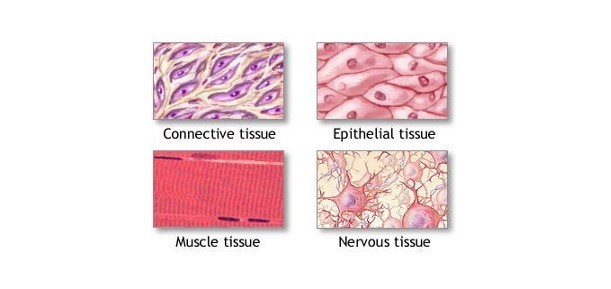Table of Contents
Why is Homeostasis Important?
In general, homeostasis refers to the equilibrium inside a system that allows it to function under a variety of circumstances. Homeostasis aids animals in maintaining a steady internal and external environment in which to function.
It’s a dynamic process that needs continuous monitoring of all bodily systems to identify changes and methods to respond to those changes and restore stability.
In animals, homeostatic regulation is made up of three parts: the receptor, the control centre, and the effector. Receptors monitor circumstances continually and detect changes that push them outside of their typical range, away from a fixed point.
The control centres receive and process data from the receptors before instructing the effectors on how to respond.
The Importance of Homeostasis
If homeostatic control fails in only one bodily system, circumstances will worsen and may become deadly. All homeostatic control systems must work properly for an organism’s health. The following information explains how different bodily systems contribute to general homeostasis.
Nervous System
The nervous system keeps the body in a state of homeostasis by regulating the rest of the body. The central nervous system and the peripheral nervous system make up the nervous system. Peripheral nerves are those that connect the limbs and organs to the brain and spinal cord outside of the brain and spinal cord.
The central nervous system is made up of the brain and spinal cord. Because it governs the operations of the medulla oblongata (involuntary processes), the autonomic nervous system (smooth muscle and glands), and the pituitary gland, the hypothalamus in the brain is particularly essential for maintaining homeostasis (hormone excretion).
Endocrine System
The glands that discharge hormones into the circulation make up this system. Hormones serve a variety of roles in the body, including targeting specific tissues to maintain homeostasis. Hormones control fluid balance, red blood cell formation, blood pressure, and inflammation, in addition to bone development, muscle metabolism, and energy generation.
Integumentary System
Through blood vessel dilatation and constriction, perspiration generation, and shivering, the skin aids in body temperature regulation. Through its surface, it also maintains the equilibrium of water and other solutes.
Particles, dirt, and germs are kept out of the body by hairs in the nose and other orifices. Vitamin D, which is required for bone development, maintenance, and repair, is also synthesised by the skin from cholesterol.
Skeletal System
The skeleton’s bones protect the brain, spinal cord, and internal organs while also serving as a calcium, phosphorous, and other mineral store. Muscle contraction, for example, needs calcium. The bone marrow is where red and white blood cells, as well as other immune system cells, are produced and stored.
The skeleton also allows for bodily mobility, which is essential for maintaining homeostasis. When an animal’s core temperature becomes too high, it might seek shelter in the shade of a tree or in the water to cool off.
Muscular System
Muscles not only help the body move by collaborating with the bones, but they also help in digestion and respiration. When muscles contract, they also protect interior organs and create heat (useful for shivering when the body is cold). Finally, the heart is made up of cardiac muscle, and its blood pumping is essential for many of the body’s homeostatic regulatory systems.
Lymphatic System
By regulating blood volume and tissue fluids, this system is essential for maintaining homeostasis. The lymphatic system collaborates with the circulatory system’s capillaries to eliminate excess fluid that can cause edoema and swelling. Lymphatics play an important role in the immune system and immunological response.
B cells develop in the bone marrow and then move to the lymph nodes, where they protect the body from external invaders. The lymph glands, tonsils, adenoids, spleen, and thymus gland are other lymphatic system components that aid in maintaining homeostasis.
Respiratory System
Gases such as oxygen and carbon dioxide are transported in and out of the lungs via the respiratory system. This is necessary in order to keep the blood pH balanced. The brain pauses breathing to raise the quantity of bicarbonate ions (carbon dioxide) in the blood if the blood is excessively acidic.
When the pH of the blood is too low, however, respiration accelerates, allowing more carbon dioxide to be exhaled. When the body temperature rises too high, the respiratory system helps to disperse heat. In animals without sweat glands, this is accomplished by open-mouth breathing or panting.
Digestive System
By removing toxins and waste and delivering nutrients to the body, the digestive system aids in the maintenance of homeostasis. It also helps the immune system fight germs and viruses that enter the body through food and drink consumption. Additionally, the heat produced during the digestion process aids in the control of core temperature.
Urinary System
Urine is used by the body to remove nitrogenous waste, which is necessary for maintaining bodily homeostasis. By controlling the amount of fluid and ions in the body, the urinary system also aids in blood pressure management. The kidneys also create erythropoietin, a hormone that promotes red blood cell synthesis in the bone marrow.
Homeostasis Citations
- Linking cellular stress responses to systemic homeostasis. Nat Rev Mol Cell Biol . 2018 Nov;19(11):731-745.
- Renin-angiotensin-aldosterone (RAAS): The ubiquitous system for homeostasis and pathologies. Biomed Pharmacother . 2017 Oct;94:317-325.
- How does homeostasis happen? Integrative physiological, systems biological, and evolutionary perspectives. Am J Physiol Regul Integr Comp Physiol . 2019 Apr 1;316(4):R301-R317.
- Physiology and pathophysiology of potassium homeostasis. Adv Physiol Educ . 2016 Dec;40(4):480-490.







